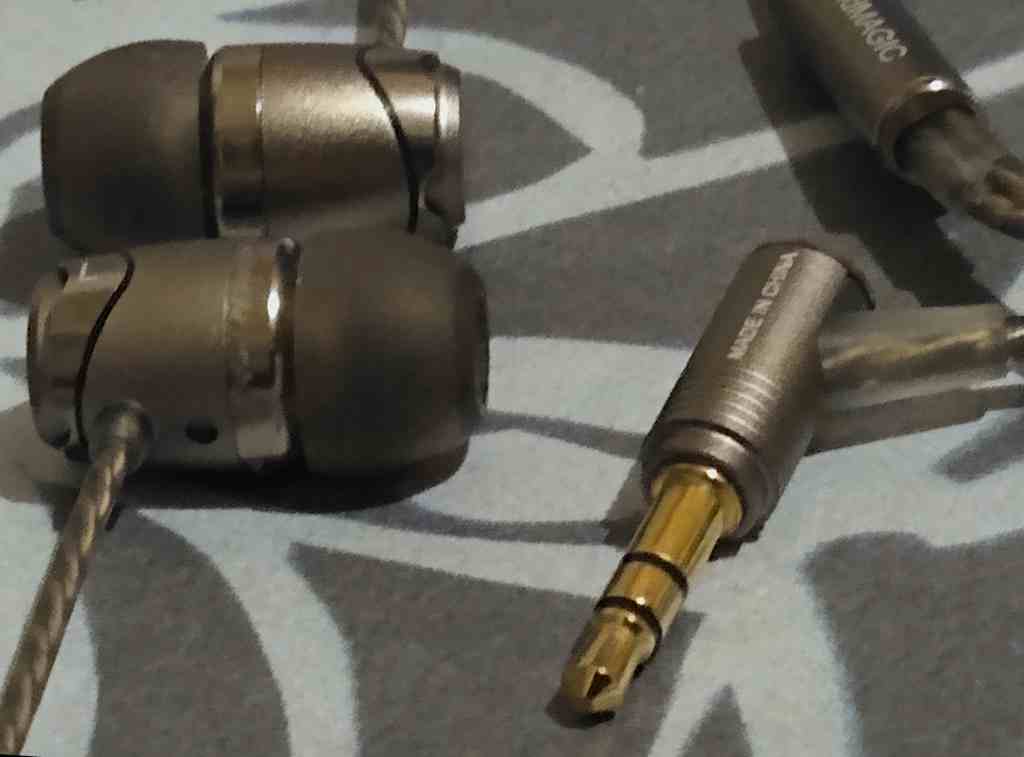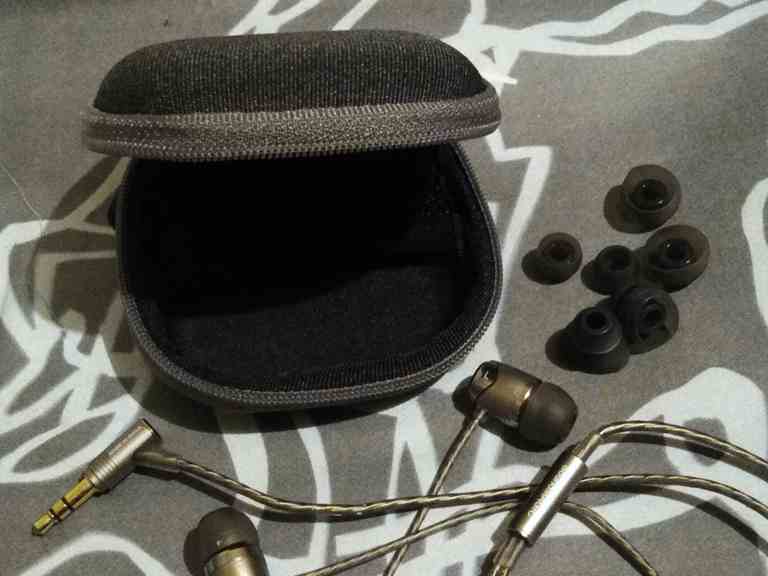SoundMAGIC E11 review

Throughwork
SoundMAGIC started in 2005 and make earphones, to acclaim. The ‘C’ variant has a microphone/switch. The ‘D’ has a builtin amplifier for a USB‐C connector. ‘BT’ is a Bluetooth i.e. wireless variant. SoundMAGIC keep it simple.
Contents

Build
Good quality throughout. Cable is thin, stiff, will tangle. SoundMAGIC’s useful‐looking rubber stain reliefs. Housings are metal barrels, unobtrusively big. Tips are mid‐depth with a light mushroom, which feel like they will hold tight. Robustness guessed reasonable. The light wings are good for comfort, the length and matte surface of the barrels make E11s outstandingly easy to put in ears. There’s a rythmn beteen the matte grey finishes, the translucent rubber inserts and the enough‐but‐no‐more size of metal parts which makes the E11s one of the few metal build earphones I rate for looks.
Sound
Reasonable volume. Range is good. Reasonable timing. Swells are reasonable—they muddle when a lot is going on. Frequencies are even. Perhaps midband horn glares a little. But unlike many, they behave. Lowband comes in neatly when asked, but there is some resonance at upper bass. For sure, E11s are limited in frequency range, but not unnecessarily so. There’s some bloom all through, a short echo, but otherwise in this way quiet. Detail reasonable, color good everywhere. Wide soundstage, good positioning.
E11s are walk away winners for vocal replay. Reasonable for orchestra, delivering volume, color and even handling, but not delivering much edge, or detail. Slow timing means rock is only reasonable. All kinds of pop are outstanding. Solo instruments good, All through E11s can make musical shape and deliver color. Outstanding games/soundtrack earphone, due to cleanliness, frequency range and color.
Spec
| mic available? | yes |
| cable noise | reasonable |
| accessories | 4 pairs eartips, carry box |
| support |
Assess
These are intended as a general purpose earphone, and that shows in the availability of switches, microphones, and wireless options. The build is appropriate to the price, and outstandingly easy to use—only build argument is a slightly noisy cable. The sound is clean, with no duff spots or emphasis, which is outstanding for vocals and soundtracks. E11s are a little slow and bumpy for rock and solo instruments, but can play them.
The E11s (like the EP09s) have dynamic drivers with frequency range limitation, so a lack of detail. The housings do not resonate, and the build seems to avoid any but short echo—whatever E11s have inside the end sound is clean and talks. What reviewers think can be found in any quick search—the E10 model that preceded this in 2011 won prestige awards for maybe six successive years, then the E11, released in 2018, is now shoulder to shoulder. It’s easy to hear why—if not the best for some musics, E11s are always clean and neat.
